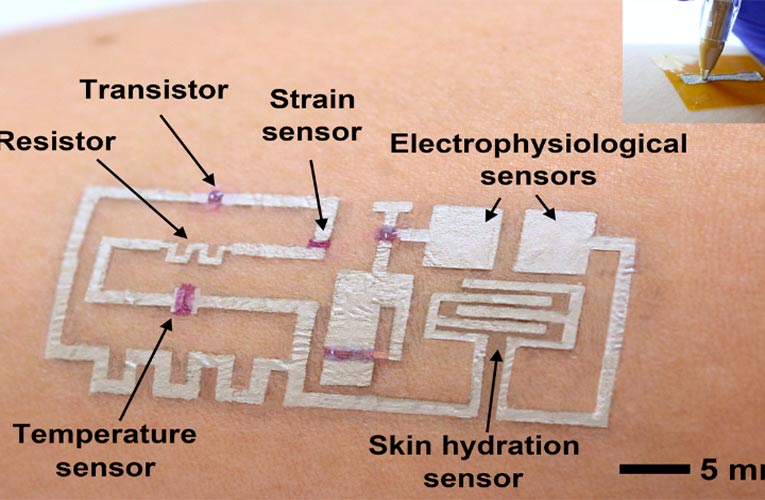
Wearable bioelectronics has become a vital part of diagnostics and treatment but even the most flexible wearables are limited by motion artifacts or the difficulty that arises in collecting data when the sensor doesn’t move precisely with the skin. As a solution to this problem, a team of researchers led by Cunjiang Yu, Bill D. Cook Associate Professor of Mechanical Engineering at the University of Houston has come up with what they call ‘drawn-on-skin electronics’.
This new form of electronics promises to enable multifunctional sensors and circuits to be drawn on the skin with an ink pen. Yes, you heard that correct! Offering a breakthrough in wearable monitors, Drawn-on-skin electronics help solve the long-standing problem of collecting precise biological data through a wearable device when the subject is in motion.
The drawn-on-skin electronics include three inks serving as a conductor, semiconductor, and dielectric. It can seamlessly collect data, regardless of the wearer’s movements. Other than this, its additional advantages include simple fabrication techniques that don’t require dedicated equipment. Besides, being easily customizable, the electronics can track muscle signals, heart rate, temperature, and skin hydration, among other physical data. Besides, the researchers have demonstrated that the drawn-on-skin electronics have demonstrated the ability to accelerate the healing of wounds too.

